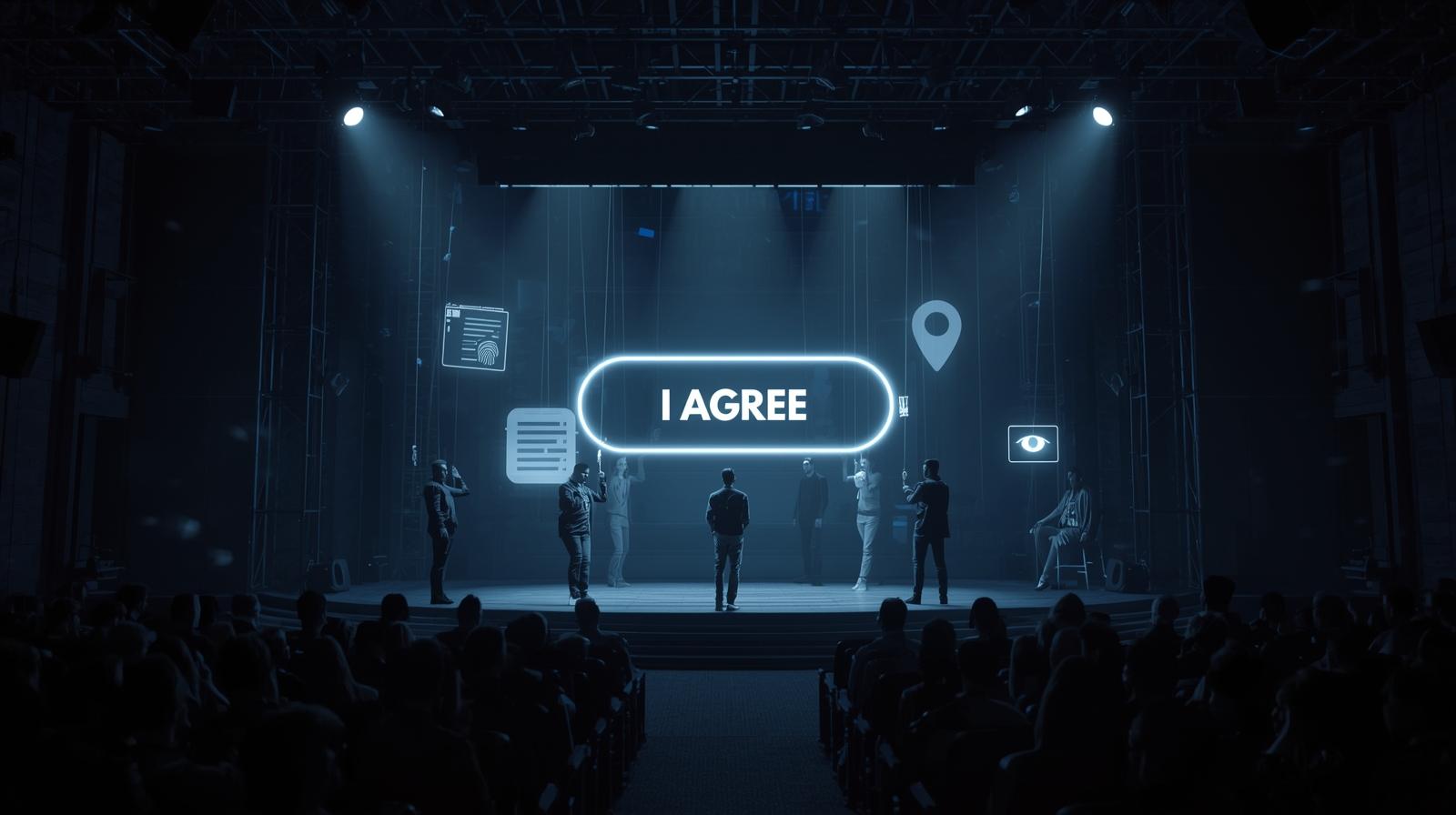
September 01, 2025
Consent Theater: Why ‘Agree’ Buttons No Longer Mean Real Permission
When was the last time you actually read a privacy policy before hitting “I Agree”? If you paused for even a moment, you would realize that the very idea of meaningful consent in digital environments has eroded. Instead of empowering choice, most platforms now choreograph what could be called consent theater. Users are offered the illusion of autonomy, but the stage is set so the only realistic outcome is compliance.
This raises a critical question: if we are constantly nudged, tricked, or worn down into saying yes, is it even consent at all?
The Illusion of Choice
Every interaction online seems to come with a binary choice: accept or decline. Yet declining is rarely an option. Platforms design friction-heavy paths for rejection—tiny opt-out links, endless pop-ups if you refuse, or disabling access entirely unless you agree. These tactics condition users into accepting by default, even when they feel uneasy.
This is not about clarity. It is about control. By making the path of resistance unbearable, platforms ensure that the overwhelming majority of users comply.
The Role of Dark Patterns
Dark patterns are the stage props of consent theater. Consider how many websites bury rejection in multiple menus or phrase options to confuse. For example, a button might say “Accept Settings” while secretly enabling data tracking. Some even highlight “Agree” in bold, glowing colors while dimming the opt-out path.
These designs weaponize psychology. They exploit urgency, fatigue, and trust, ensuring that users act quickly without examining the consequences. Instead of honest agreements, they are engineered performances where users are pushed to the outcome platforms desire.
Data Collection Without Awareness
When users click “agree,” what are they agreeing to? Often, it is an open-ended data harvest. Location tracking, device fingerprinting, behavioral analytics, and even emotional recognition systems are bundled into consent flows. Few people would willingly opt in if presented clearly, so platforms rely on obfuscation.
This is where the theater metaphor deepens: the “contract” is not a real agreement but a performance scripted by companies, with users cast as unwitting actors.
The Ethics of Manipulated Consent
Consent only has ethical weight if it is informed, voluntary, and revocable. In today’s digital landscape, none of these conditions are reliably met.
- Informed: Policies are dense legal jargon that discourage reading.
- Voluntary: Opting out is often impossible or punitive.
- Revocable: Once data is taken, few platforms allow meaningful reversal.
This means much of what passes for digital consent fails ethical scrutiny. Instead of empowerment, it legitimizes exploitation.
Psychological Costs of Hollow Consent
Beyond privacy loss, hollow consent reshapes how people interact with digital spaces. Constant exposure to manipulative interfaces breeds resignation. Users develop “consent fatigue,” where they stop believing their choices matter at all. This erodes trust in platforms and creates a culture of passive acceptance.
The psychological consequence is clear: if clicking “agree” feels meaningless, then so does the entire act of choosing.
Toward Genuine Consent
Fixing consent theater requires systemic change. Some solutions include:
- Clear, concise explanations: One-sentence summaries of what is collected and why.
- Granular controls: Letting users agree to some functions while rejecting others.
- Reversible choices: Allowing users to easily revoke consent at any time.
- Independent audits: External checks on how platforms handle consent.
- Design neutrality: Ending manipulative layouts that nudge users unfairly.
These steps would shift consent back into the realm of true autonomy instead of scripted compliance.
Why This Matters for Trust
At its core, digital consent is about trust. If platforms treat users as obstacles to be manipulated rather than partners to be respected, faith in technology continues to collapse. The survival of digital ecosystems depends not on forcing people into agreements but on empowering them to make informed ones.
The question is not whether users will click “agree.” They always will, because they must. The deeper question is whether platforms will ever give us the chance to mean it.
Final Reflection
Consent theater is not just a UX problem. It is a societal one. It reshapes the meaning of choice in an era where data is power. If agreeing no longer means permission, then every click becomes a hollow act in a staged performance. To rebuild trust, platforms must dismantle the illusion and put users back in control of their decisions.